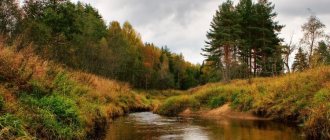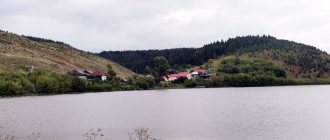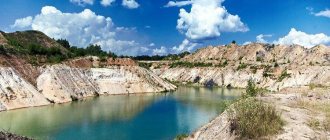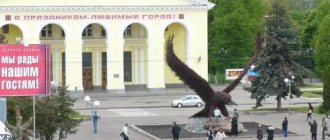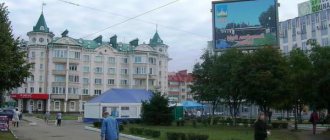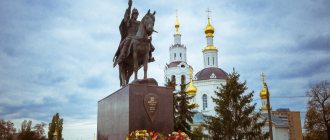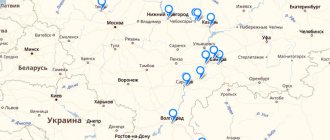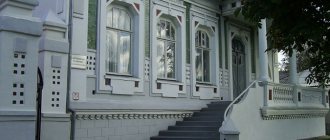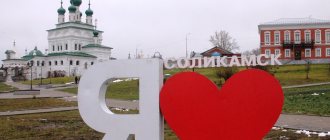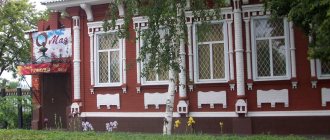Year of foundation of the city: 1566
Age, how old is the city: 455.
Date in 2021: August 5, Thursday.
The city of Orel dates back to 1566, the year Ivan the Terrible ordered the founding of a fortress on the banks of the Oka, although the first settlements here were much earlier. During its history, Orel experienced destruction and prosperity; many famous people throughout Russia were born here. On City Day, concerts are held here, passports are solemnly presented to young people, and war veterans are especially congratulated. They organize fairs where you can buy clay Pleshkov and Chernyshen toys, Oryol lace and towels with beautiful embroidery.
| When and by whom was it founded | 1992, Administration of the city of Orel |
| Key traditions | Throughout the pre-holiday week, cultural and sporting events take place in Orel. On August 1-4, employees of the City Administration visit WWII veterans - the liberators of the city - and give them memorable gifts. On August 5 at 10:00 two flags are solemnly raised: City and Red Army. The celebrations end with a 2-hour concert of Russian pop stars and fireworks at 22:00 on Lenin Square |
The city of military glory Orel will celebrate on Monday August 5, 2019 its 453rd birthday and the 76th day of liberation from the Nazi invaders. According to tradition, the celebrations will begin earlier, on July 29. Throughout the week there will be festivals, competitions, exhibitions and sporting events. Mass public festivities are planned for Saturday and Sunday, August 3-4. How Oryol celebrates its City Day, what traditions exist and which famous fellow countrymen can be met at the holiday, more on that later.
History of the Eagle
The eagle begins its chronology in the 12th century. In those days, there was a simple settlement of people who built their huts on the coast of the Oka River and the Orlik tributary. These facts are confirmed by archaeological finds. In the 15th century, the settlement was ravaged and destroyed by the army of the Grand Duchy of Lithuania. The villagers left the incinerated estate and went to look for new places of residence, scattering around the surrounding area.
In 1566, Ivan the Terrible ordered the restoration of the fortress city. This date is indicated in the chronicle and is official for chronology. In the first years of the 17th century, Orel fell to the onslaught of the troops of False Dmitry I. In the period 1607-1608. False Dmitry II became governor. 7 years later the fortress was destroyed by the Poles. For almost 29 years the city lay in ruins. It was necessary to rebuild the fortress to repel the attacks of the Crimean Tatars.
Rice. 1. Monument to the Russian military leader Alexei Petrovich Ermolov
Over time, there were fewer wars and the city turned into a center of grain and textile trade. Countless merchant ships that came here along the Oka moored off the coast. In the 18th century, the fortress was dismantled as an object that had lost its functionality. After 100 years, the city became a railway transit point, which had a negative impact on shipping.
In the first months of the 2nd World War, Oryol was occupied by the Nazi invaders. After 2 years, the Wehrmacht army left the city, transferring all its forces to Belgorod. After the liberation of Orel and Belgorod on August 5, 1943, the same evening in Moscow they celebrated a small victory with a 12-volley salute from 124 guns. Long after the collapse of the USSR, Orel was awarded the title of “City of Military Glory” (Decree of the President of the Russian Federation V. Putin No. 560 of April 27, 2007). Now the population of the regional center is slightly more than 312,000 people.
*Interesting fact! In 1889, the first tram line was launched in Orel. Emperor Nicholas II came to its opening. In those days, urban rail transport seemed like an ultra-modern achievement.
Weekend route. Beauty of the Oka: downstream from Orel to the Volga through 7 regions
“Rivers carrying life-giving moisture across our planet, like living ribbons, scatter throughout all the nooks and crannies of the earth. And among them the beautiful Oka is the most Russian river.” K. Paustovsky
2020 is marked by domestic tourism. On one of our regular weekend routes we went to the confluence of the Oka and the largest river in the Tula region - Upa.
Observing the difference between the black and muddy water of the Upa and the lighter, faster Oka, in comparison, they began to remember how the cities were located along the river and where the Oka was more preferable for swimming. As a result, they recalled a whole report, which I offer to the attention of the esteemed public of Avtotourist.ru. In it I propose to go along the flow of the Oka. We haven’t been to the source (yet - we’ll see), but we got to the mouth, and we also saw the Oka in a couple of dozen places in 7 regions: Oryol, Kaluga, Tula, Moscow, Ryazan, Vladimir, Nizhny Novgorod. And we also saw several tributaries: Orlik, Upa, Cherepet, Zhizdra, Dugna, Vashana, Tarusa, Protva, Nara, Osetra, Moscow, Tsnu, Solotcha, Trubezh, Klyazma - you can’t remember them all.
First, a map of the pool:
The length of the Oka - some 1400 meters does not reach 1500 kilometers.
Its source is in the village of Aleksandrovka, Glazunovsky district, Oryol region
.
From there to the city of Orel
is almost 80 kilometers, but during this time the Oka manages to gain full water due to the rivers flowing into it. In Orel there is a junction of two rivers - Orlik and Oka. We visited here in August 2017 – report.
Further up to the Tula region
Oka is unfamiliar to us, but in
Belevo
we can again observe it in all its glory - along the way we can take several photographs of the city panorama from the river side:
In one of the regional TV programs I came across the expression: “
Oka is the belt of the Virgin Mary
.” It has several meanings: the river really was for a long time the protection of the Russian people from the invasion of enemy hordes from the south, and many monasteries were strung like beads on this “belt”.
And the Belevsky Spaso-Preobrazhensky Monastery is the first of those that we will meet on this wonderful “belt”. The monastery is located on a high bank above the Oka River, flat fields stretch far, far away, and the domes of several churches soar high above them - each remarkable in its own way. A report about Belev on Avtoturistu.ru is here.
The next date with the Oka is right at the confluence of
the Upa
and Oka in front of the city of Chekalin in the Tula region. From here to the mouth of the Oka - 1203 kilometers.
You can get to the switch along a completely passable dirt road along the fields, unless you are afraid of the walls of the closely approaching Tatars.
Next along the Oka course is
Chekalin
, the smallest city in Russia, its population is less than 1000 people. The report on Avtoturistu.ru is here.
The Oka River is characterized by a difference in the height of its banks; near Chekalin it is especially noticeable:
Behind Chekalin, near the village of
Zapadnoe
the Cherepet
River flows into the Oka .
The river is very small, I can’t even believe that ten kilometers away on Cherepet there is a reservoir and the Cherepetskaya State District Power Plant, I wrote about this in detail here.
The name of the settlement is also not simple: it is not Western at all
,
but Western - from the word “trap
”
: here, behind Likhvin (as Chekalin was called until 1944), between two bends of the Oka, ambushes were set up on enemy watercraft.
This was told by a local native, but I couldn’t find any documentary evidence, but I’ll give it as an interesting version. Holy Intercession Good Monastery
with a 22-meter bank above the river - the local “New Athos”:
Turning the riverbed 90 degrees between the villages of Dobroye and Varushitsy:
Further Oka enters the borders of the Kaluga region
, where
the Zhizdra
, and then
the Ugra
.
Kaluga
and its symbol - the Museum of Cosmonautics - are located along the banks of the wide Oka:
But when asked where the locals swim, they answered us with a categorical “fie”.
Kaluga residents go to the lakes. When we saw crowds of cars at the entrance to the announced traditional places of their summer vacation, we decided to consider the advice an inappropriate joke. And we chose for ourselves one of the most beautiful places in the Kaluga region - the village of Dugna
(report).
Pontoon bridge in the Dugna area:
Next - again the Tula region
.
Aleksin
city :
He was made famous by a local native, I don’t know what his last name is, but he is known as the founder of a one-hit group: “Alexin” and “Why are you so scary,” respectively.
But seriously, Aleksin is an ancient city, dating back to 1348. It can’t decide whether he’s smart or handsome. Because the industry seems to be developing relatively successfully, and at the same time it has every reason to be not only a regional, but also a health resort near Moscow. The social sanatorium “Aleksin-bor” was named in honor of the local natural attraction in the city. Aleksin-bor
is a nature reserve, a pine forest with an area of over 400 hectares, starting within the city boundaries.
And then, one after another, recreation centers, sanatoriums, and children's health camps rushed along the Oka.
In Bunyrevo
, for example, in Soviet times there was a children's camp "Zapolyarye", in which the film "Welcome, or No Trespassing" was filmed. That’s why the credits indicate that Vorkuta schoolchildren took part in the filming. Now, as far as I know, there is no camp. The most popular holiday destination in Bunyrev is Shakhtar. But everyone can use the beach, but you need to go not through the territory of the recreation center, but along the river along the path.
In the
Bunyrev
Vashana
River flows into the Oka - shallow, but very clean and with ice-cold water from numerous springs.
Egnyshevka and Velegozh
are two more extremely popular holiday destinations. It’s 130 kilometers from here to the Moscow Ring Road, so it’s no wonder that the bulk of local summer residents drive cars from Moscow and the Moscow region.
In winter, during the New Year holidays, it is also lively. We once celebrated the New Year at the Egnyshevka sanatorium, the impressions were very mixed, but the snowy winter Oka was fabulous!
Just like nearby
Polenovo
:
I have already written in detail about Vasily Polenov’s museum-reserve on the banks of the Oka. And now - some fresh photos of these magical places:
Loud
and the holy spring: The water from the source rushes down to the Oka with a really cheerful noise, fully justifying its name:
And here it would be necessary to go back a little upstream and talk about Tarusa
on the opposite
Kaluga
shore, but if there are places that I didn’t like at all, that’s it. That’s why I don’t even have a single photograph, but the memories are provided by the disgustingly cheerful song I heard there, “Oh, Tarusa, a pearl by the river, oh, Tarusa, you’re a cool place.” So we skip Tarusa. Although no, I found a couple of low-quality photographs, with a monument to Marina Tsvetaeva and a view of the turn around which Polenovo:
We return to the opposite - Tula
coast: on the very border of the Tula region and the Serpukhov district of Moskovskaya near the village of
Lanshinsky
there is an excellent place for swimming, the entry is very convenient, the access is acceptable, the cleanliness of the coast does not leave much to be desired, and the width and, most importantly, the depth of the Oka in this place allows you to send pleasure boats from Serpukhov to Tarusa and Polenovo.
Moscow region
Going to
Podmoklovo
to see
the Church of the Nativity of the Blessed Virgin Mary
with a rotunda shape unusual for Russia, we were sure, judging by the map, that Oka was very close.
But due to dense buildings, the river is not visible at all, so you’ll have to take their word for it to string another beautiful temple onto the “belt of the Virgin Mary.” 14 kilometers before Kolomna the Sturgeon
. View of Sturgeon in the Venevsky district of the Tula region:
Kolomna
- here the Moscow River flows into the Oka. But among our archive of ten years ago there was no photograph of this remarkable place, so I will limit myself to a picture of the Moscow River and cozy Kolomna.
Ryazan region
Konstantinovo
is the birthplace of Sergei Yesenin.
Surprisingly, I tried to find the poet’s poems about the beautiful Oka, and indeed about the river, and suddenly it turned out that the artistic space of Yesenin’s poems is dominated by fields, distances and steppes, and of the reservoirs in his “golden fund” - at best, a pond or some abstract water.
And he dreams of all the “fields, meadows and forests, covered with the gray chintz of these northern pale skies.” But if you dig around, you can find something about the river: The river is quietly dozing.
The dark forest does not make noise. The nightingale does not sing and the twitch does not scream. Night. There is silence all around. The stream only gurgles. With its brilliance, the moon makes everything around silver. The river turns silver. The stream is silvering. The grass of the irrigated steppes turns silver. Night. There is silence all around. In nature, everything is asleep. With its brilliance, the moon makes everything around silver . It seems to me that there is a reason for the gorgeous rhyme: river - Oka!
On the right bank of the Oka is
the St. John the Theologian Monastery
in the village of Poshupovo.
The history of the monastery is given on the website: “ In December 1237, the holy apostle and evangelist John the Theologian defended his monastery from the Tatar-Mongol conquerors.
The Terrible Khan and his warriors were frightened by the vision of the holy Apostle John the Theologian. Refusing the idea of destroying the monastery, Batu left his golden seal with the miraculous icon, which was kept by the monks for 416 years. In 1653, it was removed to gild the large water-blessing bowl .”
Speaking about the Oka in the Ryazan region, one cannot help but recall Konstantin Paustovsky: the Russian writer spent his summers for many years in
Solotch
, a village on the river of the same name, and left in the “Meshcherskaya Side” numerous references to “the Russian river itself,” in his apt expression: “
Between forests and the Oka River stretch across a wide belt of water meadows.
At dusk, the meadows look like the sea. As if on the sea, the sun sets on the grass, and signal lights burn like beacons on the banks of the Oka. Just as in the sea, fresh winds blow over the meadows, and the high sky has overturned into a pale green bowl .” House-Museum of K. Paustovsky in Solotch:
Ryazan
slightly touches the Oka - the river flows beyond the northern outskirts of the city, but its presence is also indicated in the Ryazan Kremlin: the Trubezh River, turned into a deep backwater,
approaches
its ramparts; from the pier located here you can take a river trip along the Oka. The story about the trip to Ryazan and Solotcha on the Avtoturistu.ru website is here.
Kasimov
- near this city of Oka, which amazingly connects Muslim and Orthodox cultures, once again makes a big bend. Read more here.
Vladimir region
Murom
- here is a cable-stayed bridge, one of 72 permanently operating bridges across the Oka. It is considered a local landmark; details are in the report for the three provinces.
Gorokhovets
the Klyazma
flowing into the Oka :
Nizhny Novgorod region
Nizhny Novgorod
- story on Avtoturistu.ru here. Here the Oka flows into the Volga.
Or vice versa?
“ From the point of view of science studying the regime of rivers, it would be correct to assume that the river should be named after the tributary that has the greatest length and basin and carries with it the largest amount of water.
The basins near the Volga and Oka up to Gorky are the same, the average annual water content is the same, but the Oka, as we have already said, is 187 km longer than the Volga. Therefore, formally, it is the Volga that flows into the Oka and the resulting river should bear the name Oka. However, historically the opposite understanding of the issue has developed. see E.V. Boldakov “Life of Rivers”, ed. 195170 "
Our virtual journey along the Oka River has ended, good health and bright impressions to everyone!
Features of the holiday
Festive events take place throughout the pre-holiday week. One of the main events is dedicated to the day of the liberation of the city. In the first days of August, representatives of the mayor's office visit the veteran liberators. As of 2021, there are 21 people left. The elderly are shown respect through a solemn speech and are given memorable gifts.
Remembrance rallies are being held in some areas of the city. According to tradition, event participants lay flowers at the monuments: Komsomol Heroes L.N. Gurtiev, I.V. Voronov and at the stele “Eagle - City of Military Glory”.
Video 2. Airborne Forces. Orel City Day August 5, 2015
On City Day, August 5, a massive gathering of citizens takes place at Peace Square, where they are congratulated by the top officials of the Administration. Then, exactly at 10:00, 2 flags are solemnly raised: City and Red Army. After the official ceremony, a youth action begins at the intersection of the lane. Georgievsky and st. Lenin. In 2021 it was called “The War I Survived.”
At the Military History Museum, passports are solemnly presented to young people over 14 years of age. From 12:00 in all areas of the city there are concerts, festivals, receptions, exhibitions, sports and festive events. At 16:00 on Lenin Square, a company of honor guard demonstrates its trained skills.
By 21:00, townspeople flock to Lenin Square, where Russian pop stars perform for them. In 2018, the group “Lube” performed their songs. At 22:00 volleys of festive fireworks were heard, and then the concert was continued by the rock band “Black Coffee”.
In addition: Find out what date the Honey Savior is celebrated in August.
Video 3. Brief video essay about the celebrations of August 5, 2018
Orel: an ancient city with a rich history
The fertile lands located around Orel attracted landowners here, so in the 19th century the city became the center of noble culture. The Oryol region is the birthplace of such writers as I. S. Turgenev, M. M. Prishvin, L. N. Andreev, A. A. Fet, philosopher M. M. Bakhtin, historian T. N. Granovsky. In the city, out of ten museums, six are literary. Therefore, Oryol is often called (after Moscow and St. Petersburg, of course) the literary capital of Russia. A lot of tourists praise the house-museum of N. S. Leskov, located at st. Oktyabrskaya, 9.
Currently, the city is divided into four administrative districts: Zavodskoy, Sovetsky, Zheleznodorozhny and Severny. Most of the attractions are located in the largest district of Orel - Zavodsky. So, if you go to visit this city, it is better to rent a house for a day in Orel somewhere in this area.
Despite the fact that Orel is a small city, it has enough attractions. The most interesting of them is the famous flat house on Lenin Street. In those days, when the street was still called Bolkhovskaya, a tram ran along it. And since the locals decided that a triangle was a more stable figure than a rectangle, they decided to install the walls in such a way that the houses would not be affected by tram vibrations. There is also the “Falling House” - the intersection of Krasnoarmeyskaya and Oktyabrskaya streets. Pay attention to the new building and the old house. If you look diagonally, then...
Famous residents of the city
Many worthy people came from Orel and the region, some of them became famous throughout the country. They love their city, Orel, and it would not be surprising if you come across one of them on City Day, just walking down the street. Here is a list of modern Oryol residents of whom their small homeland is proud:
- Gennady Zyuganov - leader of the Communist Party of the Russian Federation;
- Alexander Misurkin – test cosmonaut;
- Valery Barinov - film actor;
- Gennady Trofimov is a singer, known to us as the performer of the song for the series “Border: Taiga Romance”;
- Vyacheslav Polunin - Honored Worker of Circus Art;
- Mikhail Segal – music video director;
- Leonid Roshal is an outstanding children's doctor.
Some of the listed people were born in the Oryol region, but lovingly honor the capital of the region. It is especially worth noting that since the 19th century, worthy residents have been awarded the title “Honorary Resident of the City of Orel.” The tradition was interrupted in 1917 and revived in 1967. Over the entire history of the city, the title has been awarded to 58 citizens, and their names are published on the official website of the City Council.
*If you visit Orel, you will definitely bring from it: towels and tablecloths with embroidered “Oryol List” or Mtsensk lace. And also clay toys: Chernyshin or Pleshkov.
Rice. 2. Chernyshensky clay toys by Natalia Frolova
List of films, songs, books dedicated to the city
The centuries-old history of the Oryol region and its capital has accumulated a lot of interesting material for creative work. Many songs and books have been written about the city. Oryol has become a film location for several feature films and documentaries. We invite you to familiarize yourself with a short list of works:
- songs: “My Orlovye” (N. Afanasenko), “Old Park” (N. Vasiliev), “Waltz about our city” (E. Derbenko);
- books: “My 1st Kursk” (Alekseeva L.I.), “Oryol Sketches” (V.A. Vlasov), “The Original Eagle” (V. Nedelin);
- films: “On Thin Ice”, “Fathers and Sons”, “Own Opinion”.
It is worth adding that Orel bears the unofficial title of “Capital of Russian Literature.” The city has seen many famous writers on its streets who considered it an honor to dedicate prose or poetry to it.
Video 4. All the sights of the city OREL (2015)
Alexander, June 7, 2021.
